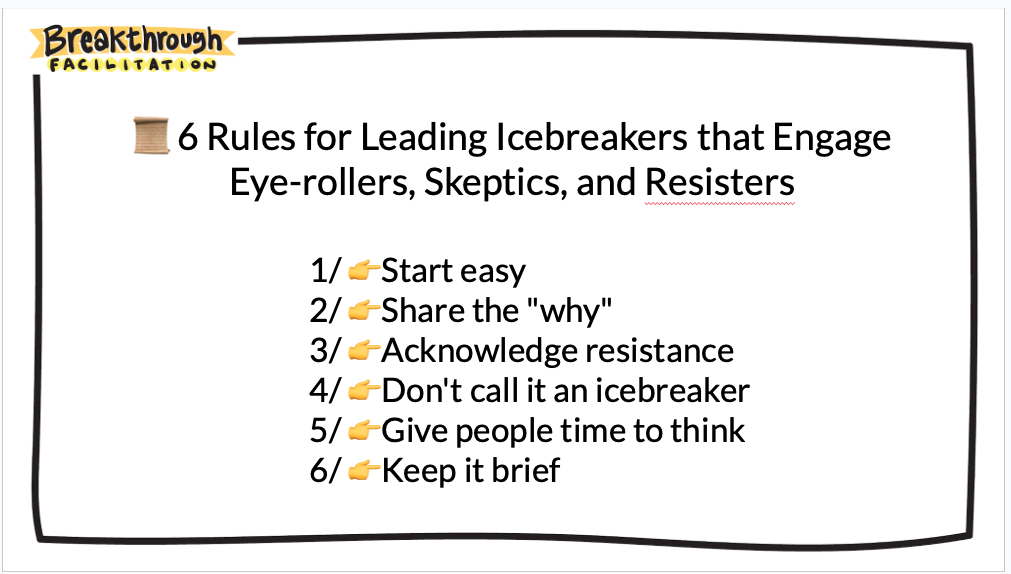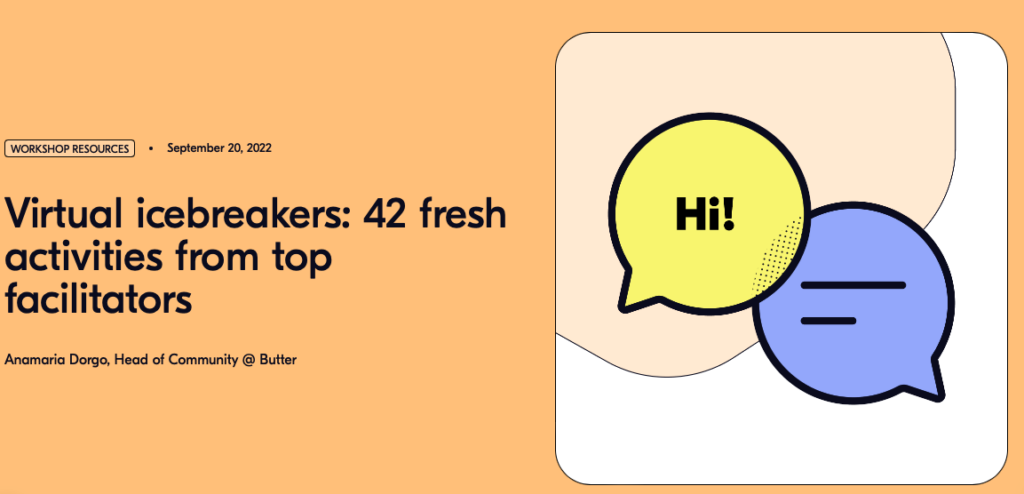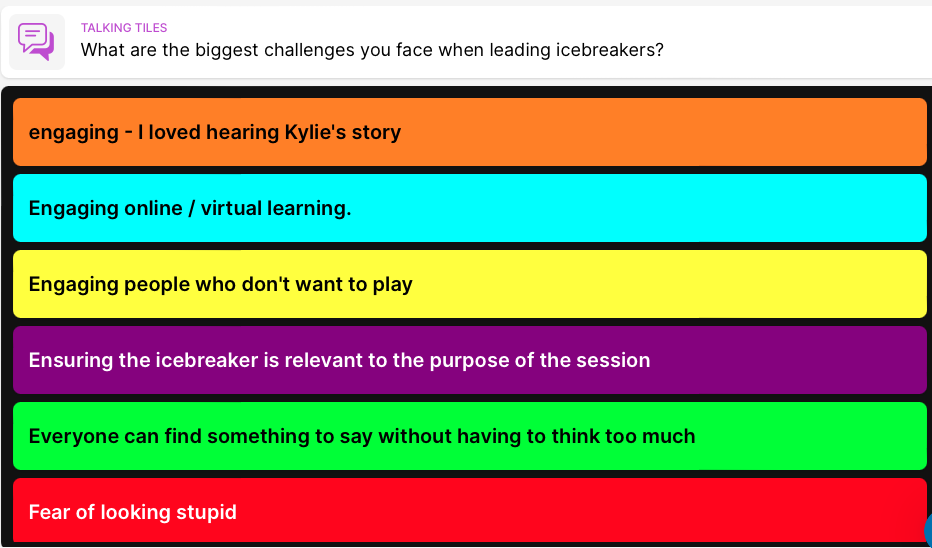Hello friends,
Greetings from Barcelona ☀️
A very special welcome to the facilitators joining The Quest from the New Zealand Facilitator’s Network Festival of Facilitation. 🎉
I had the huge honor of leading the Festival’s opening session on icebreakers that inspired this newsletter.
There is one question that keeps coming up…
“How do I lead icebreakers for people who hate icebreakers?”
If you lead live sessions for busy practitioners, chances are you’ve seen a few eyes roll at the mere mention of the word “icebreaker”.
It can be tempting to skip the icebreaker.
When faced with resistance you may be tempted to jump straight to the “serious business”. But here’s a secret: even the most skeptical participants can benefit from a well-designed icebreaker.
Icebreakers are the gateway to productivity.
Icebreakers are not just frivolous playtime. When done well they create safety. They ease people into your session. And they fast-track connection. In the virtual world, these moments can literally make or break your sessions’ success.
You can win over the nay-sayers.
There’s an art to designing and leading icebreakers that will warm up any virtual room. With some simple strategies, you’ll be able to turn the dreaded icebreaker into the highlight of your online session.
So how do you lead icebreakers for skeptics? That’s our Quest for this week. 🔎
👉 6 rules for leading icebreakers for eye-rollers, skeptics, and resisters
👉 My favorite icebreaker toolkits
Plus this week’s curated list of Facilitator events and resources.
Let’s jump right in!
📜6 rules for leading icebreakers for eye-rollers, skeptics, and resisters
Icebreakers aren’t inherently cringy. But they can feel that way. Especially for groups that don’t easily let their guard down.
Here are 5 rules I follow for leading icebreakers to put even the toughest groups at ease.
1/ 👉Start easy
People feel uncomfortable when asked to reveal too much too quickly. Warm up the group first with a welcome, an easy check-in prompt in the chat or poll that segues into the icebreaker.
2/ 👉Share the “why”
People put their guard up when they don’t understand why they are being asked to do something. Sharing the “why” of your icebreaker builds trust in you. And helps people understand the relevance to the session’s goals.
3/ 👉Acknowledge resistance
Resistance often comes up from a sense of being ignored, misunderstood, or threatened. By acknowledging resistance you show respect and build trust that can help to reduce it.
4/ 👉Don’t call it an icebreaker
The word “icebreaker” can bring up bad memories of feeling uncomfortable and awkward. Instead, call it a “connection” activity – after all that’s what they are!
5/ 👉Give people time to think
People feel embarrassed when they are put on the spot. Giving your group members time to think through their responses takes off the pressure. And helps them feel more confident.
6/ 👉Keep it brief
Busy practitioners are especially sensitive to time. For a one-hour meeting spending even 5 to 10 minutes on a warm-up and icebreaker can result in more meaningful productive meetings.
Big thanks to Kerri Price, the Festival of Facilitation participants, and Roxana for inspiring ideas for this post.
What are your winning strategies when leading icebreakers for skeptics? Hit reply to this email and let me know:)

🧰 My favourite online icebreaker toolkits
Looking for icebreakers but don’t know where to look?
Here are 3 of my favorite icebreaker toolkits with over 100 vetted connection activities👇
1/ Butter’s Virtual Icebreakers: 42 Fresh Activities from Top Facilitators. An expertly curated list of tried-and-tested icebreakers from seasoned facilitators.
2/ Session Lab’s 29 Online Energisers for More Engaging Meetings.A collection of energizers neatly organized by session purpose – including conference calls:)
3/ Slido’s 35 Icebreakers Perfect for Virtual and Hybrid Meetings. A comprehensive list of online interactive activities with helpful examples.

💪This Week’s Facilitator Finds
1/ ✍️ Jan Keck’s The Best Icebreakers and Why They Fail . Check this out if you want to understand why some icebreakers backfire and what you can do instead.
2/ 🎥Facilitator’s School 100 Miro Tips (You’ll Wish You Knew Sooner) A video by Daniel Wirtz that walks you through everything you need to know about whiteboard software Miro.
3/ ⚒️ StreamAlive’s new Zoom App. If you’ve taken my course Breakthrough Facilitation you’ll have experienced the chat-to-screen magic of StreamAlive. With the Zoom app it’s even easier to display chat comments on the screen like this👇

💌 Thanks for reading The Quest
I always love hearing your feedback and suggestions. Just hit reply to share your thoughts and ideas.
If you were forwarded this email, you can subscribe to The Quest 👉here.
If you enjoy The Quest, I’d appreciate it if you shared it with anyone you think might like it.
Creatively yours,

Whenever you are ready there are 2 more ways I can help you:
👉Custom coaching & team training. Book a free 15-minute zero-commitment call with me to see how I can support you and your team.
👉5-week Live Online Course. The Breakthrough Facilitation course gives you tools, personalized feedback, and a proven framework for designing and leading high-engagement live sessions. Join the interest list and be the first to get the next cohort dates and discounts.